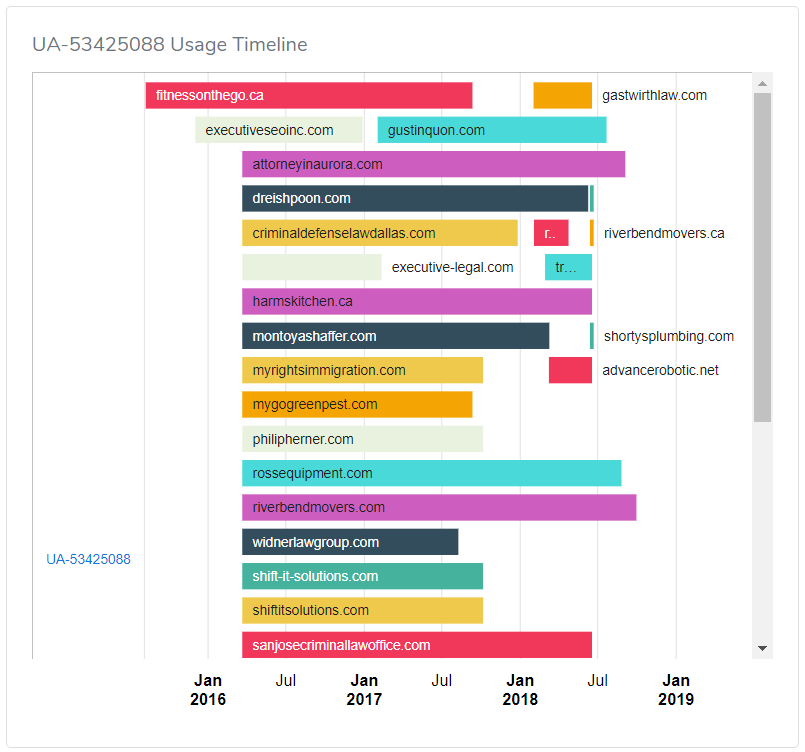I agonized a bit over how to go about writing this post — then, I agonized some more over whether or not I should be writing it at all.
Winnipeg, after all, is a fairly small city – a small pond, if you will. Its digital marketer “community” (such as it is) could be compared to a group of anglers who all head out fishing on the same lake every weekend. One is expected to mind their wake; it’s considered bad manners to rock anybody else’s boat.
At the same time, I’m also aware that the tone I’ve been setting in these first few posts has tended to skew somewhat negative. I recently found myself in a conversation about “personal branding”, and I’m fairly certain that mine could be summed up in five words:

On the other hand, a “personal brand” is exactly that – personal. This is my blog, after all, written to promote my agency. And back when I was writing this agency’s business plan, I considered the subject of today’s post to be so important that I worked it into the statement of Kairos Media’s core values.
So, allow me to present the first post in a new (and hopefully infrequent) series: Agencies Behaving Badly. To get myself into the proper headspace, I wrote most of the following while listening to Wu Tang Clan Clan’s “Bring Da Ruckus” on repeat.
Because Da Ruckus is what I wholly intend to Bring.
What’s The Best Way To Organize Your Business’ Digital Marketing Accounts?
One of the more frequently asked questions heard by digital marketers from businesses of all sizes and industry verticals is this: “what’s the best way to structure our [website analytics/online advertising/social media management/etc.] account?”
While there are plenty of articles and best practices available on the subject, there’s really no one “correct” answer here. For example, I’ve often seen it recommended as a “best practice” that businesses create a unique Google Analytics property for every seperate website or mobile app they want to track.
You can find articles claiming that this advice comes directly from Google itself – and perhaps this was an official “best practice” at one time, but I can’t find any mention of it in the (current) official support docs.
Personally, I often prefer to install a single Google Analytics property on all of an organization’s sites and apps, then segment that data into seperate views for each domain/subdomain/app as required. Such a setup can make it easier to understand an audience’s engagement across all of the business’ online properties, while working to limit the “double-counting” of audience or engagement metrics (currently, the free version of Google Analytics does not allow for data to be aggregated across multiple properties).
I won’t go into the details of account structure for any one specific digital marketing tool – we’d be here all day – but I’ve put together a few helpful links relating to some of the more popular digital marketing tools:
- Google Analytics’ official support documentation on account structure and hierarchy
- “The Last Guide to Google Ads Account Structure You’ll Ever Need,” by Bobby Kittredge at WordStream
- “The Last Guide to Facebook Ad Account Structure You’ll Ever Need,” by Brett McHale at WordStream
The “One Organization, One Account” Rule
While there may not be any one “right way” for digital marketers to structure their accounts, there’s definitely at least one “wrong way” of doing it. Unfortunately, it’s also the way that a lot of digital marketing agencies have chosen to adopt as part of their core business model over the years.
If I were ever to teach a course on digital marketing, one of the key takeaways I’d want to communicate to all of my students is this: “One Organization, One Account”.
When it came time for the class on account structures, I would have those words written in big scrawly awful letters across the whiteboard. I would have the entire class repeat the phrase aloud, and as homework they would write it out fifty times on paper. And the homework would count for ten per cent of their final grade.
There are a number of reasons why I’m so adamant about “One Organization, One Account” as a rule. More specifically, there are four reasons why. And here they are:
1: Clients Own Their Data. End Of Discussion.
A business should always, always hold ownership of their own marketing assets. Always. Those assets don’t belong to their ad agency, or their SEO agency, or their web designer, or that one kid in the office who remembers their Instagram password; those assets belong to them. As a digital marketing agency, that’s why your client is paying you to build something for them in the first place.
Abiding by the “One Organization, One Account” rule ensures that your clients will retain ownership of their marketing assets, both now and into the future. Because “Account” is typically the highest level of ownership in most common digital marketing tools, it’s absolutely essential that at least one key stakeholder from the client business (preferably the owner, as well as any key marketing managers) be granted full administrative rights at this level.
2: You’re Running An Agency, Not A Racket
Eventually, every single one of your clients is going to leave you (or perhaps, you’ll leave them). That’s not bad news in and of itself; business relationships evolve over time, so it’s best to have a plan for client “offboarding” when the time comes.
Offboarding can become incredibly messy if you haven’t abided by the “One Organization, One Account” rule, and instead opt to create and execute multiple clients’ assets through a single account. The reason for this messiness is simple: while it’s usually pretty straightforward to transfer the setup or configuration details of one account to another, porting the actual data which has been collected through that account is often a different story.
Any digital marketer worth their salt already knows this; data integrity is essential to improving the results of our efforts over time. Losing access to an old account and having to replace it can result in losing years worth of valuable intel, whether that be historical website performance data, or the results of your most recent online ad campaigns. Without that information, you’re basically flying blind.
It’s one thing when a business loses access to their marketing data through a simple error, such as assigning only one account “owner”, who takes their login credentials with them when they leave the company.
But for a disappointing number of digital marketing agencies – including several right here in Winnipeg – the potential for clients to lose access to their data isn’t a mistake. It’s an integral part of the business model.

Whenever a business partners with an outside agency, they are entrusting that agency to use their expertise in order to make decisions in the best interests of their business. And when a digital marketing agency insists on organizing their clients’ digital marketing assets under accounts that they alone control, they’re working to create a false dependency on their ongoing business relationship which borders on outright extortion.
I’ve been trying to come up with an analogy for agencies who operate this way, and I think I’ve landed on one: imagine that you’ve been dating someone for a couple of months, and one day they tell you that they’re going to burn down your apartment if you ever break up with them.
At first you write it off as a joke, but then, the next time they come over, you find a small pile of oily rags in your bedroom closet. And each time they visit, you find another few piles scattered around your place.
Now, imagine that every month, this partner asks you for $50, so they can go buy fresh linens and turpentine.
I’m not gonna name names (I mean, I totally will, but buy me a drink first), but there are absolutely agencies that operate this way in the Winnipeg market. And if you run one of those agencies – you know who you are – I’ve got something to tell ya:

3: If You Were Trying To Run A Racket, Then You’re Not Very Good At It
For a long time there, shady digital agencies could hold a lot of leverage over their clients when it came time to renew the contracts. Any business wanting to move away from their existing agency faced a lot of obstacles, and usually had to be willing to make some tough sacrifices in order to do so.
Online advertising tools like Google AdWords (now Google Ads) or Facebook Ads were typically easy for clients to regain control over, since these accounts have never been well-suited to running campaigns for multiple businesses.
But when it came to Google Analytics, if the tracking code on your website had been created through an agency’s account, there was literally no way for you to reclaim ownership of those assets, or your data. Your now-ex-agency would always maintain administrative access to all of your GA properties, and if they were ever feeling especially petty, they could lock you out or delete those properties entirely.
Breaking up was hard to do. As a business, your best option was often to just grab whatever data you could (to establish some performance benchmarks), scrub the old GA code from your website, and start over from scratch using a new Analytics account.
Then, in late 2016 – after years of requests from frustrated users – Google introduced Property Moving to Analytics, and yea, it was good. More than a decade after GA’s initial launch, businesses no longer had to fear arbitrarily losing access to their web analytics any time they wanted to switch agencies.
Of course, not everybody seems to have gotten the memo yet. I cannot count the number of times in the past twelve months that I’ve had some agency tell me it’s “impossible” for them to transfer ownership of a former client’s GA properties. I’m quite certain that’s what they’ve told all their clients, too.
Whenever I’m onboarding a new client whose Google Analyics properties are setup under an agency account, my first step is usually to have the client send their former agency an email (CCing me), requesting that I be added to the GA property as a new user with both Manage Users and Edit permissions, in order to transfer ownership to a new account.
If the agency responds by saying this can’t be done (which happens fairly often), Step Two involves me chiming in with a link to this Google support doc, which is *literally* the second result if you search the phrase “transfer google analytics property”.
To date, I have not needed a Step Three.
4: You’re Handing Out Leads To Your Competitors
I’ve been saving my favourite point in favor of the “One Organization, One Account” rule for last; by choosing to create assets for multiple clients under one account, digital marketers are also choosing to expose their client relationships publicly, with what I assume are unintended consequences.
Let’s go back to the example of Google Analytics – it’s been working well so far. When GA is added to a website, the code snippet that gets installed/executed on-site includes a “tracking ID”, which is a unique parameter made up of three parts:
- The letters “UA”, short for Universal Analytics (first introduced in 2013, Universal Analytics is now the operating standard for all Google Analytics properties);
- A Google Analytics account number; and
- A property number associated with this account, to which Google Analytics data will be sent.
If an agency runs multiple client GA properties through a single account, then the tracking codes installed on those clients’ websites will all include an identical Google Analytics account number value.
“Oh, big deal,” I hear you say, “so all my clients will have this little snippet of code on their sites. Nobody’s ever gonna dig that deep into the code to figure out what our account numbers are, then go looking for those numbers on other websites.” And you’re probably right; practically nobody would be willing to put in that kind of effort.
But let’s say, hypothetically, that somebody built a web-crawler which functions similarly to a search engine spider, but instead of building an index of web pages for inclusion in search results pages, it created an index of the tech stacks it finds on those websites, and WAIT CRAP WHAT SOMEONE ALREADY DID THAT?!?
BuiltWith is a freemium research service that provides truly extraordinary insight into the tools and technologies that websites are… well… built with. Run a search for just about any URL you could think of, and BuiltWith will spit out a detailed profile of the technologies they’ve detected on that site (along with the global usage stats for each).
One of my favourite features of theirs is the “Relationship Profile”, which offers a breakdown of the various “tags” BuiltWith has detected on a given website. This profile also includes a detailed listing of “connected sites”: URLs where those same tags have been detected, and when.
In the case of a single-account, multi-client Google Analytics setup, the results can be… revealing.

When you choose to ignore the “One Organization, One Account” rule, you’re actively making it easier for your competitors to identify both your past and current clients, and to create a rough timeline of when those client relationships began and ended.
I suppose you should be given credit for your generosity, but I’m not sure that most agency heads would consider any of that to be great news.
Hat-Tips And Finger-Wags
Ultimately, the “ideal” account structure for your business’ digital marketing tools will depend on a number of factors, and is often best left to an experienced digital marketer, who’ll make their recommendations based on the answers to several related questions such as:
- Which online properties will these accounts be associated with (ie. websites, mobile apps, social profiles, etc.)?
- Who will need access to these accounts, and for what purposes?
- How do I want to present this data? Will this data need to be presented differently to various stakeholders in the organization?
- Are there other business/marketing tools which should be linked with these accounts? And if so, how should these be integrated?
- What volume of data will be sent/processed? Will the proposed structure be capable of collecting all of the marketing data I need, or does it risk hitting/exceeding the account’s data collection and processing limits?
Throughout this post, I’ve talked about why I feel that it’s wrong on principle for an agency to run their clients’ digital marketing assets through a single, agency-owned account.
I’ve discussed the (shady, imo) business rationale for why some digital marketers still continue to do so, and why that rationale doesn’t even really hold up anymore.
I’ve even offered a bit of insight into my own methods of prospecting for new clients – and make no mistake, if I find out that you’re running multiple client assets through a single account, then eventually I’m gonna reach out to those clients to have a chat. And I’m probably going to link them to this post when I do.
It’s *the current year*, people. There are no excuses for ignoring the “One Organization, One Account” rule anymore. We should know better by now. We can do better than that, and most of us are.
Tip of the hat to those of us who do; wag of the finger to those who don’t.
